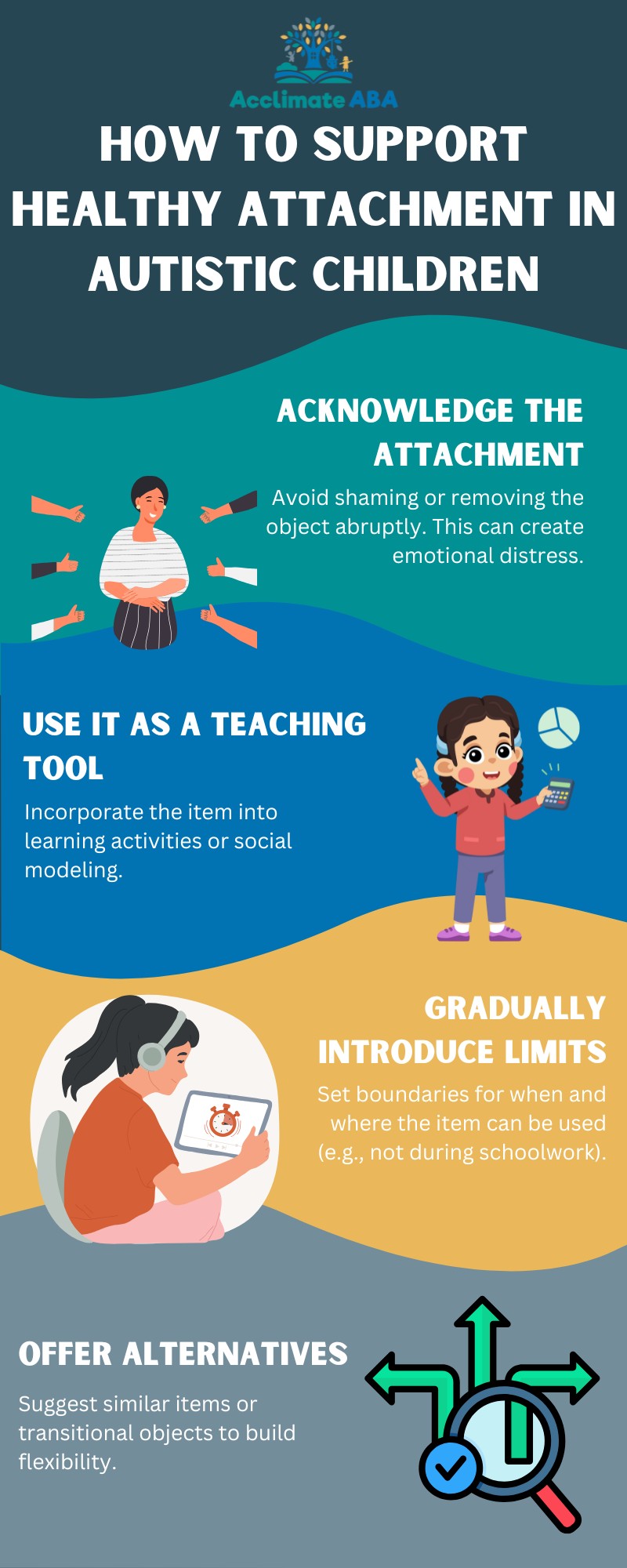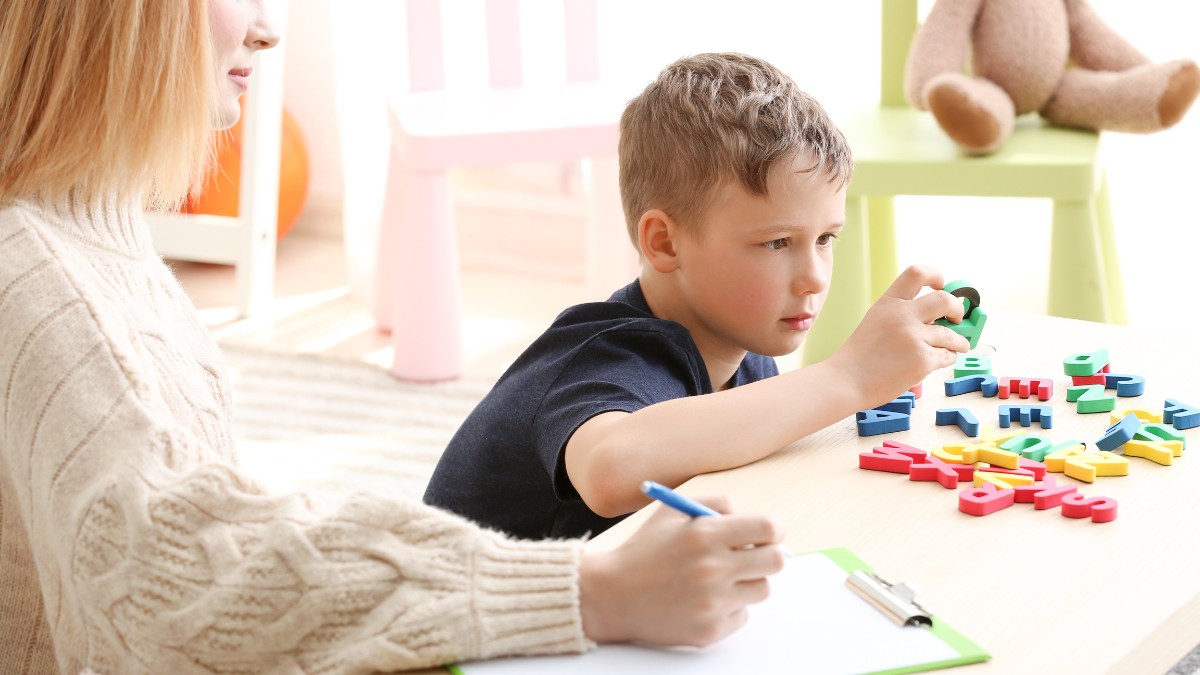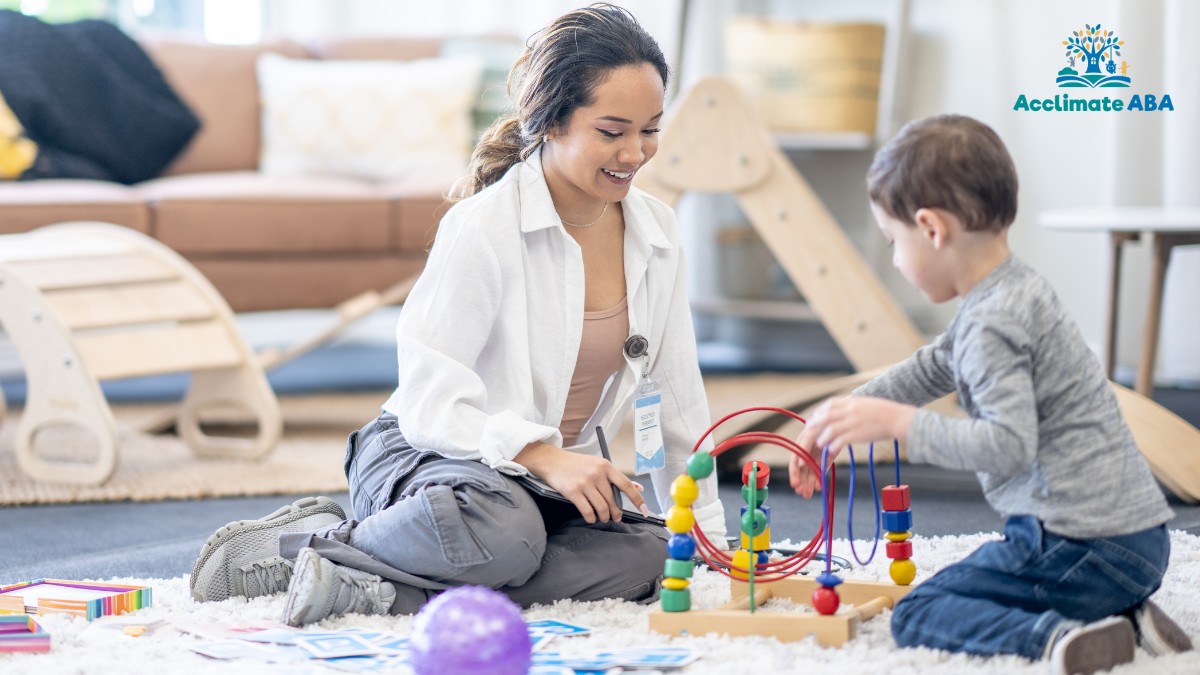Key Points:
- Autism attachment to inanimate objects can serve emotional, sensory, or routine-regulating purposes.
- This attachment is not uncommon and may provide comfort, focus, or predictability.
- Effective coping strategies include structured routines, social modeling, and behavioral supports like ABA therapy.
Children with autism often experience the world differently from their neurotypical peers. According to research, up to 75% of autistic youth have at least one special interest. One lesser-discussed behavior is autism attachment to inanimate objects, where a child may form deep bonds with items like toys, clothing, containers, or seemingly random items like sticks or bottle caps.
While this behavior may seem unusual to outsiders, it often serves a deeper purpose for the child. Understanding why these attachments develop and how to respond can empower parents to provide the right support.
This article explores the reasons behind object attachment in autism, how it impacts daily life, and what steps families can take to help their child grow socially and emotionally while respecting their needs.
Autism Attachment to Inanimate Objects: Is It Normal?
Yes, autism attachment to inanimate objects is a common behavior and often serves emotional or sensory regulation purposes. Children may prefer objects over people, not due to a lack of emotion, but because these items provide consistency and control.
Some children may carry a favorite item everywhere, include it in routines, or become distressed if it’s lost. These attachments can be intense but are not inherently harmful unless they interfere with learning or social interaction.
Why Do Autistic Children Form Attachments to Objects?
While all children may become attached to certain toys or comfort items, children with autism are more likely to show long-term, specific, and intense interest in particular objects. The reasons for this can vary, and understanding the cause is key to supporting the child appropriately.
Some possible reasons include:
1. Predictability and Control
Objects offer a sense of consistency and control, unlike social situations, which can be unpredictable. This reliability can make objects more comforting and engaging for autistic children who prefer structured experiences.
2. Sensory Input
Many autistic children are drawn to how objects feel, look, or sound. These sensory-rich experiences can be soothing, stimulating, or simply enjoyable, fulfilling their unique sensory preferences and needs throughout daily routines.
3. Emotional Regulation
Familiar objects often serve as emotional anchors. They help children cope with anxiety, stress, or transitions by providing a sense of comfort, familiarity, and emotional grounding in unfamiliar or overwhelming environments.
4. Repetitive Behavior
Strong object attachments may reflect repetitive or restricted interests, which are common in autism. Repeating behaviors with favorite objects can bring joy, reduce stress, and offer a predictable way to interact with the world.
What Are Common Signs of Inanimate Object Attachment?
Some autistic children form deep attachments to objects, which may help them manage stress, sensory input, or transitions. These attachments often go beyond typical childhood preferences and can involve unusual or highly specific items.
Common signs include always keeping the object nearby, distress when separated from it, and repetitive or ritualistic play. These behaviors can offer comfort, predictability, or stimulation in overwhelming environments.
While the attachment may seem intense, it often serves an important purpose for the child’s emotional or sensory regulation. Recognizing and respecting this attachment can support the child’s sense of security and emotional well-being.
When Is Object Attachment a Concern?
It’s important to distinguish between comforting habits and disruptive fixation. While many object attachments are harmless, some may interfere with development or safety. Below are red flags to watch out for:
- Refusing to participate in activities without the item
- Object use becomes aggressive or compulsive
- Attachment interfering with social development or relationships
- Emotional breakdowns triggered by small changes related to the object
In such cases, a balanced approach is needed. The goal isn’t to eliminate the attachment entirely but to promote flexibility, coping skills, and social development.
How Can Parents Support Healthy Attachment While Encouraging Growth?
Supporting a child with autism who has a strong attachment to inanimate objects requires compassion and thoughtful intervention. Parents can respect the child’s emotional needs while gently teaching boundaries and alternatives.
Here are some steps to consider:

Over time, these strategies can build the child’s confidence and adaptability.
What Are Effective Coping Strategies for Object Attachment?
Building a supportive framework at home or in therapy can reduce the impact of object attachment on daily life. These strategies prioritize regulation, communication, and emotional safety. Below are some examples:
1. Visual Schedules and Predictable Routines
Establishing a consistent daily routine through visual supports can reduce anxiety and the child’s need for object-based reassurance by offering structure and clear expectations.
2. Social Stories and Role-Playing
These tools teach when and how to engage with objects appropriately, preparing children for situations where their preferred item may not be available.
3. Sensory Substitutes
Providing alternative sensory tools—like stress balls, weighted blankets, or chew toys—can meet the same regulatory needs fulfilled by the original object attachment.
4. Applied Behavior Analysis (ABA) Strategies
ABA methods build flexibility by reinforcing gradual change, offering alternatives, and teaching emotional regulation through structured, evidence-based steps.
5. Communication Supports
AAC devices, sign language, or speech therapy can empower children to communicate needs verbally or visually, decreasing reliance on objects for comfort or expression.
6. Environmental Modifications
Designate calm zones where children can safely engage with their object, minimizing disruption to daily routines while supporting emotional regulation.
7. Collaboration with Educators and Therapists
Using consistent responses across home and school environments fosters predictability and builds the child’s trust in others beyond the object.
Can Object Attachment Have Benefits?
Yes, object attachment can offer several benefits for autistic individuals. These attachments often provide emotional security, helping to reduce anxiety and support self-regulation. Familiar objects are predictable and consistent, which can feel soothing in environments that may otherwise feel overwhelming.
In some cases, object attachment can even support developmental goals. A favored item might encourage interaction, serve as a communication aid, or be incorporated into therapy sessions to boost engagement. Instead of immediately trying to remove the object, professionals often recommend working with it, gradually increasing flexibility while respecting its comfort value.
How Can ABA Therapy Help with Object Attachment?
Applied Behavior Analysis (ABA) therapy provides structured, individualized strategies to manage behaviors like intense object attachment. Rather than removing the item entirely, ABA therapy identifies the function of the attachment and teaches alternative skills that meet the same need.
Some ABA approaches include:
1. Functional Behavior Assessment (FBA)
ABA therapists begin with FBA, identifying why a child is attached to an object—whether for comfort, attention, escape, or sensory input—to guide appropriate, individualized interventions that meet the same need more adaptively.
2. Reinforcement Systems
ABA uses positive reinforcement to encourage flexible behavior. For example, children might earn a reward for limiting object use during transitions, increasing their ability to function in different environments.
3. Desensitization Training
This technique gradually increases a child’s comfort being separated from the object for short periods. Over time, tolerance builds without distress, fostering greater independence and flexibility in everyday routines.
4. Skill-Building Programs
Targeted lessons help children develop alternative ways to self-soothe, communicate, or manage change. These new skills reduce reliance on objects by expanding the child’s coping and expressive options.
These interventions are tailored to each child’s developmental level and needs, always grounded in respect and empathy.
Turn Small Steps Into Big Progress With ABA Therapy
If your child is struggling with rigid behaviors or intense attachment to objects, professional support can make a meaningful difference. At Acclimate ABA, we offer personalized ABA therapy in Utah to help children develop flexibility, self-regulation, and social engagement without losing the comfort they value.
We understand that every attachment tells a story. Our compassionate team works with families to build strategies that honor your child’s unique preferences while guiding them toward growth.
Contact us today to learn how our ABA therapy in Utah can help your child thrive with the structure and support they need to succeed.


